Succession, Secession!
The notion of zera kodesh, “holy seed,” appears only twice in the Bible, both times in reference to the people of Israel as a whole. For Hasidim, however, it has a more restricted meaning. It denotes what Samuel Heilman, in his new book Who Will Lead Us? The Story of Five Hasidic Dynasties in America, calls the “genealogical sanctity” of the offspring of rebbes, a characteristic that qualifies them (and almost them alone) to succeed to any vacant thrones of Hasidic courts.
A reigning rebbe’s infertility can thus create problems. These weren’t quite resolved for the Munkács rebbe Chaim Elazar Shapira when he finally had his first child in 1915 at the age of 43, for his (second) wife gave birth to a girl. She proved to be their only child, and since she could never inherit her father’s position it was imperative that she marry, in Heilman’s words, “someone both worthy and capable of carrying on the Munkács tradition.” By the time she was 11, she was betrothed to a suitable candidate, a relative whose seed was quite holy in its own right, Boruch (Boruchel) Rabinovich. Upon his father-in-law’s death in 1936, the 23-year-old Boruchel began a career as a rebbe and, soon, an ex-rebbe in distress, one that involved peregrinations from Munkács to Poland to Budapest to Israel to Brazil, and back to Israel.
Boruchel’s travails during and after the years of the Holocaust—a long story in itself—left him severely depleted and prepared only to assume a rabbinic post in São Paulo. Instead of reviving the rebistve in either Israel or New York, as he had attempted to do, he ended by “essentially abdicating his position as Munkács Rebbe.” In Brazil he “lived a modern life, driving (and even learning to fix) his own car, walking the dog, [and] helping his wife with the dishes.” He even “earned a university degree in philosophy and psychology, and later taught a course in philosophy at the University of São Paulo.”
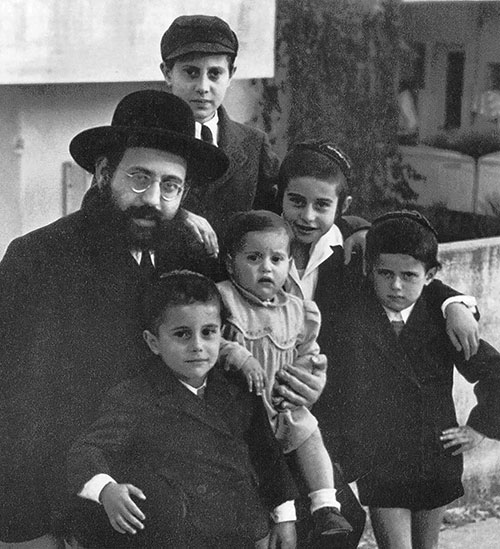
Boruchel apparently wanted his own children to follow in his rather untraditional footsteps, sending them to Brazilian public schools while providing them with a supplemental Jewish education in the afternoon. But he eventually dispatched his boys when they reached their teens to the (decidedly non-Hasidic) Telshe Yeshiva in Cleveland, where Munkács Hasidim desperate to have a new rebbe tracked them down. Only the mystically inclined third son, Moshe Leib, was interested in what Chaim Ber, a leading member of the community, had to offer. Disappointing his father, he rejected college, and set off on a course that would prepare him for the unprecedented step of becoming a new rebbe, “even though the previous one was still living and nominally still rebbe.”
Since “no bachelor could be a full-fledged rebbe,” this included a marriage that the son-in-law of the Satmar rebbe helped to arrange. The bride was a distant relative and a descendant of the Ba’al Shem Tov, the founder of Hasidism. The enterprising Chaim Ber oversaw the wedding in New York City in 1962, arranging for the Satmar rebbe to officiate and in a “breach of Hasidic etiquette” assigning a larger part in the ceremony and the celebration to himself than to the groom’s father. Boruchel endured this humiliation for as long as he could, but when Chaim Ber danced with the groom longer than he himself had, he exploded:
Exasperated, Boruchel lunged at Chaim Ber, tearing hair from his beard, then grabbing the microphone from the band and stopping the dancing. The abrupt violence and sudden silence was frightening. Now Boruchel began a stunning tirade, letting out all his feelings. Overwhelmed by what he saw as a public slight and embarrassment, he talked about why he had left Munkács and had not settled in America. He justified his disappointments with his Hasidim.
They, in turn, became even more disappointed with Boruchel who, after taking up “a position in the Israeli state rabbinate in Holon,” engaged in a legal battle with his son over control of the valuable Munkács library. Moshe Leib, for his part, still presides over his court in Borough Park.
The peculiar story of the Munkács succession helps to explain how Hasidism managed to reinvent itself after being nearly annihilated in the Holocaust to become one of the largest Jewish denominations in America, on the way to becoming perhaps the largest. The secret of Hasidism’s success, Heilman suggests, lay in each Hasidic group’s strong drive to preserve the dynasty to which it was attached, the realization of the importance of the rebbe for the perpetuation of the group, and the ability to identify and cultivate a new generation of rebbes in the face of formidable obstacles.
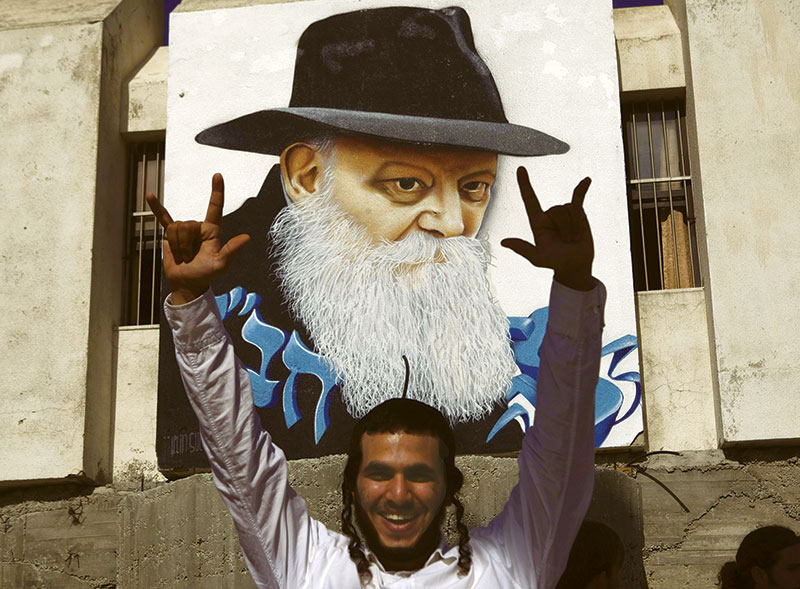
While the main subject of Heilman’s book is Hasidic succession in the United States, he backs into the pre-American history of Hasidism to review many earlier developments, including the well-known struggle over succession that followed the death in 1812 of Schneur Zalman of Liadi, the founder of Chabad. “The contest” between his leading disciple and his son, Heilman writes, “may have seemed ideological or personal, but in fact it was structural and economic.” Yet the very paragraph that begins with this bald assertion concludes with a partial retraction. Heilman writes that this first Chabad succession “was driven as much by a desire of the family to hold on to the Hasidim and the economic and political power of the court as any matter of ideology or spiritual development.” However, with regard to these matters of ideas and spirit, Heilman has little to say.
Unfortunately, this almost exclusive focus on material factors pervades Heilman’s entire book. This is not surprising, for he tells us forthrightly in his prologue “what this book is not.” It “is not a consideration of the writings, ideological arguments, and teachings of Hasidic rebbes or the spirituality that animates followers’ attachment to them.” But can the story of succession really be told in complete abstraction from such matters? After all, a key part of what these men do as rebbes is teach, make ideological and interpretive arguments, and inspire their followers toward greater spirituality.
Heilman shows how rebbes seek to obtain positions that will afford them control over extensive assets that grant them economic security, power, and influence. Saintly as they are reputed to be, rebbes are human beings vying for what is essentially political power. This does indeed seem to be the case among, say, the Satmar Hasidim. When Moshe Teitelbaum, the third rebbe of Satmar, died in 2006, Aaron and Zalman Leib, his two sons, battled for control of the dynasty. With more than $50 million of assets at stake, the fighting was fierce. As Heilman reports, defenders of Aaron used verbal and physical violence, even going as far as hiring nightclub bouncers to beat up their rival’s followers.
But what is true of the Satmars today was not necessarily true of their sect at all times. Yet Heilman believes that the very first Satmar rebbe, Yoel Teitelbaum, engaged from the start in self-serving behavior. As the youngest child of the rebbe of Sighet, knowing full well that there was little to no chance that he would inherit his father’s position, he conspired, in Heilman’s account, to gain control of a Hasidic crown by unconventional means. Yoel was well known for his piety, as demonstrated by his practice of barely sleeping, fasting regularly, and studying for long hours in seclusion. According to Heilman, however, Yoel’s pious practices were deliberate maneuvers to gain distinction and stand out in order to secure for himself the mantle of rebbe. Indeed, Heilman even suggests that Yoel decided to marry at the age of 17, not because marrying at that age was (and is) the custom of Hasidim—especially the children of rebbes—but because he had to be married in order to be a viable candidate for the position he sought.
Heilman explains Menachem Mendel Schneerson’s ascendency to the position of rebbe of Chabad in 1951 similarly. Here he expands on his 2010 biography (co-authored with Menachem Friedman) of the seventh Chabad rebbe, The Rebbe: The Life and Afterlife of Menachem Mendel Schneerson, in which he portrays Schneerson as a failed electrical engineer in need of a job, who seized upon the opportunity to become a social engineer as the Chabad rebbe. Aware that his investment of time and energy in pursuing a career in engineering had deprived him of sufficient experience and exposure to Chabad Hasidim, Schneerson made a conscious choice to play catch-up and outflank his brother-in-law Shmaryahu Gourary, who had been by their father-in-law’s side for decades, who was well known to Hasidim, and whose marriage to Yosef Yitzchak’s eldest daughter had made him first in line.
According to Heilman, Schneerson positioned himself to accomplish this goal of winning the interest and loyalty of Hasidim during the year of mourning for his father-in-law. He even sat shiva, led services, and recited Kaddish in a different room from Shmaryahu, where he was able to showcase his abilities and compete with his brother-in-law for “a more enthusiastic, larger, and engaged audience.” (Never mind that it is Chabad’s custom for each mourner who accepts the responsibility of reciting Kaddish to lead his own services, of necessity in a separate room.) Since he clearly desired the position, the fact that Schneerson rejected repeated pleadings from Hasidim, including senior Hasidim with great authority, that he accept it must have been nothing but a ploy.
Heilman’s cynical assessment of Yoel Teitelbaum and Menachem Mendel Schneerson is not preposterous. It is surely possible that these leading Hasidic lights did vie for their positions and craftily sought to gain control of them. Yet of all the possible explanations for their motives, one wonders why Heilman generally opts to assume the worst. Is it not possible, if not plausible, that Schneerson, for example, truly did not want to assume the position of rebbe, as he asserted repeatedly, and ultimately agreed to accept it because he felt compelled to continue his father-in-law’s work and believed that he had been called to the task? If one listens to the recording of Schneerson’s inaugural mamor (discourse given by a rebbe) on the 10th of Shevat 1951, for example, one cannot help but be moved by his tear-choked voice when he speaks of having responsibilities for which he was not given a choice.

Regrettably, Heilman’s sweeping conjectural claims about different Hasidic masters’ motivations for becoming a rebbe are matched by a similar explanation of the positions taken by the various rebbes toward messianism. He suggests that in Hasidism the concept of messianism generally reflects a concern about succession and is a means of quelling anxiety. Basing his argument on a short, thought-provoking essay by Joseph Dan, Heilman maintains that in Hasidic thought the rebbe and the messiah are basically interchangeable. Since both serve the same function of providing Hasidim with material and spiritual blessing, the promise of the messiah is nothing more than a more permanent rebbe. From this Heilman concludes that when the pathway to a new rebbe is secure, there is little need for discussion of the messiah. Conversely, when there is no natural successor in sight, a messiah is needed for the Hasidim to receive the blessings of “bana, chai, u’mezona” (children, health, substance) and spiritual guidance to which they would have grown accustomed by virtue of having had a rebbe.
Not surprisingly, Chabad serves as Heilman’s primary case study with which to test this theory. Although messianism was present in the teachings of all of the Chabad rebbes, beginning with its founder, Schneur Zalman of Liadi, it did take on a more urgent tone in the talks of Yosef Yitzchak, the sixth Chabad rebbe, and the prolific writings and discourses of Menachem Mendel Schneerson, the seventh. Of course, the easiest and most obvious explanation for Yosef Yitzchak’s increased emphasis on messianism is his experience of the horrors of Stalinist Russia and the Holocaust and the longing for redemption that it stirred in his soul. However, on Heilman’s analysis, Yosef Yitzchak took a great interest in messianism only when he realized that his grandson Barry Gourary, for whom he had once harbored great hopes, was no longer a suitable candidate to one day replace him. Similarly, Schneerson, who eventually did assume the position, stressed messianism at the outset of his tenure as rebbe and made it a staple of the 40-plus years that he held that office because he was childless. According to Heilman, Schneerson realized from his very first day in office that he would die without an heir; therefore, he constantly felt the need to placate his followers’ anxieties swirling around the unanswerable question of how they would eventually manage without a rebbe.
While it is certainly possible that Schneerson’s childlessness played a role in his messianic obsession, especially in 1988 after his wife died and his messianic teachings took a new turn, it is hard to believe that his complex messianic ideology, worked out over the course of four decades, can be reduced to his anxiety over succession. In his 2009 book Open Secret, Elliot Wolfson persuasively argued that Schneerson’s messianism represents a type of monistic hyper-consciousness, built on nearly two centuries of Chabad teachings, which had little to do with the person of the messiah or the blessings and comforts the messiah might provide. Even if one disagrees with Wolfson’s analysis, his work at the very least proves that Schneerson’s messianism was a highly nuanced and sophisticated work of theology. The lives of Hasidic masters cannot be as easily detached from their ideas as Heilman would like to think.
Nonetheless, Who Will Lead Us? includes many great stories, all of them sharply and engagingly told. Heilman’s account of the fight over the leadership of the Bobovers (resolved after years of infighting by the New York State Supreme Court) is worth the price of the hard cover volume alone. By zeroing in, however, on only the most material aspects of his subject, he has made some of the all-too-human leaders of Hasidism look more ordinary than they really are.
Comments
You must log in to comment Log In
Suggested Reading
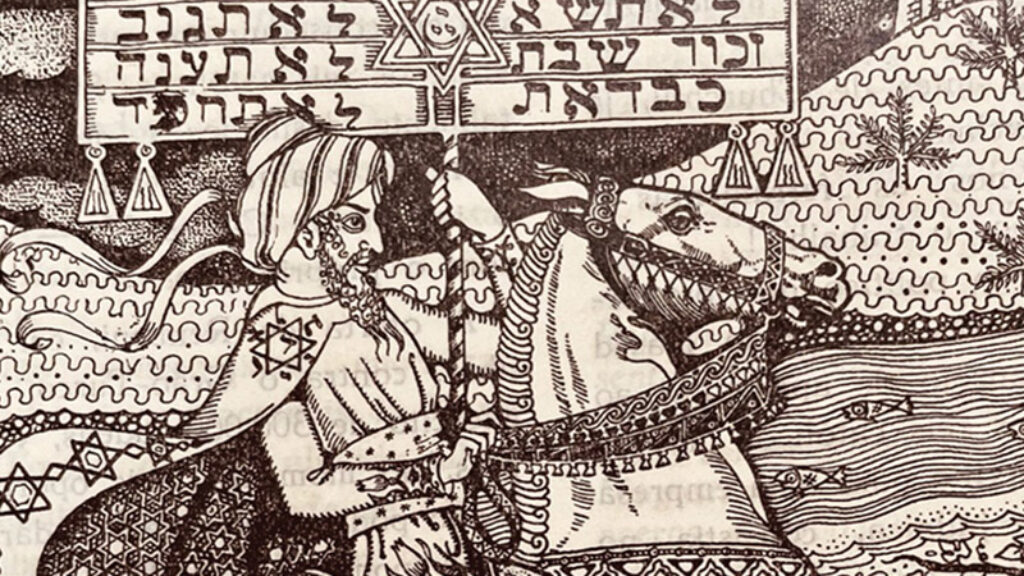
Prince of the Lost Tribes
Years before Shabbtai Zevi emerged, another Jewish radical tore across Europe, gathering followers and generating dissent.
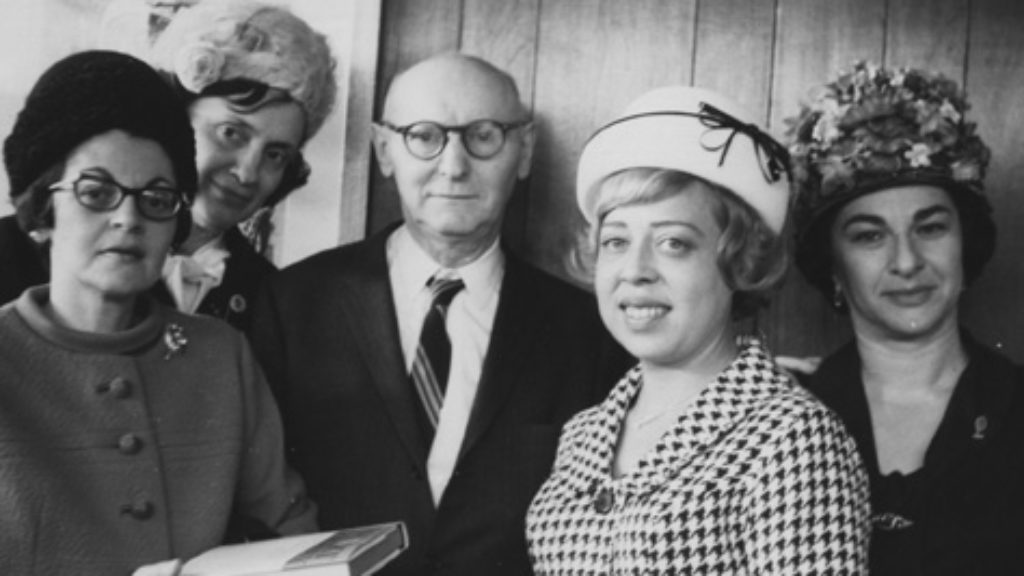
A Harem of Translators
Singer insisted that all foreign-language translations of his work be based on the English versions. And most of them were done by young women who closer to typist-editors than true translators.
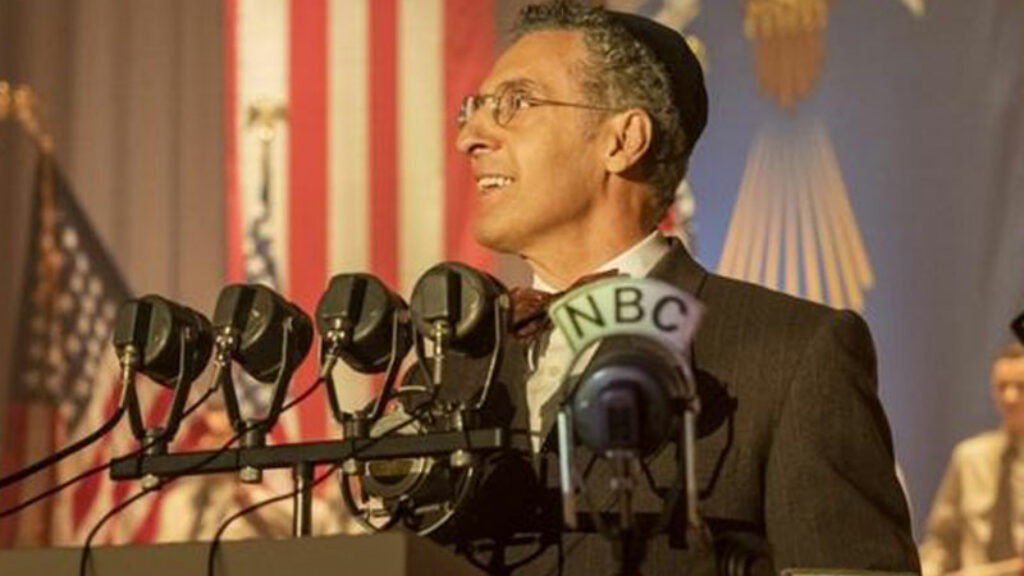
Could It Have Happened Here? The Implausible Plotting of The Plot Against America
Was America in 1940 primed for an antisemitic leader, as Roth and his adapters would have us believe?

History, Memory, and the Fallen Jew
Yosef Hayim Yerushalmi predicted a day when the historian would give his task over to the poet. A retrospective look at his writings show his own struggle between the claims of academic history and Jewish memory.
hopecrolius
Extremely good article. As one who spends plenty of time pondering the messiah and enjoys learning and praying with local Lubavitcher, this article shed lift more deeply into the issue of succession, which looms even larger with Yud Shevat coming up this week. It's easy to focus on the spirituality a rebbe emphasizes, while forgetting that they are human and not immune to temporal matters.
gershonhepner
REDEMPTION
Redemption comes not from an altar––
it has to come le’altar, now!
Unfortunately, if you falter,
even God does not know how
to bring redemption, since He needs
cooperation. Not alone,
but helped by you and your good deeds,
He’ll bring you closer to His throne,
which is the kiseh hakavod,
the throne of glory He will leave
to give a helping hand, for God
redeems at once, if you believe.
What is the reason for delay?
Why does it look as though He schlepps?
He isn’t coming till the day
we do not falter in our steps.
Till then a rebbe might replace him,
provided that he has a son
who can succeed, and not disgrace him,
by filling, as the rebbe's done
a messianic role. Without,
Menachem Mendel Schneerson
implied that he without a doubt
was the messiah, sans an heir son,
While in the Satmar-led confession,
because Reb Yoilish had no heir,
the sect has split, and there's secession,
Luftmenschen without air and heir.
[email protected]